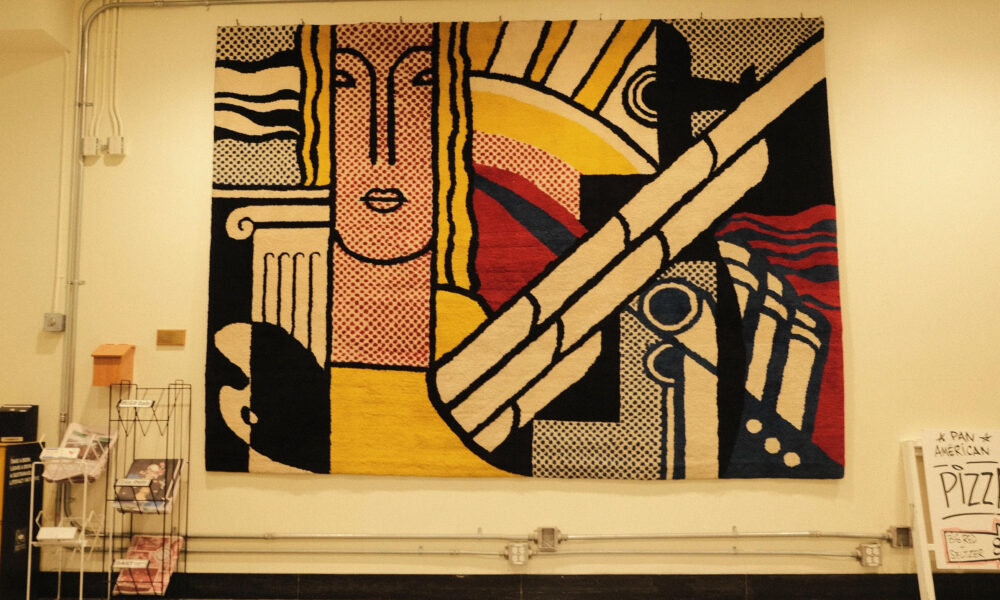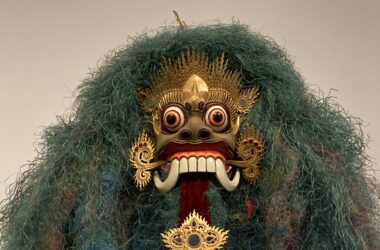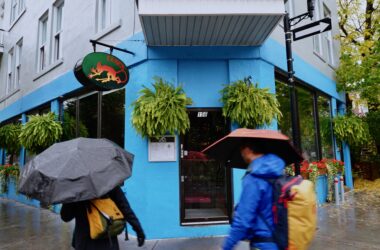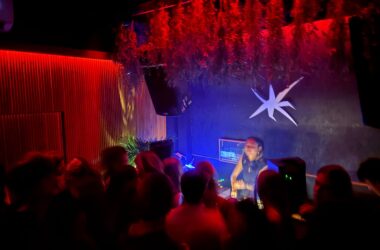One thing that everyone can agree on about McGill is that the campus is absolutely stunning. With the beautiful Mount Royal as a backdrop to the varying architectural styles on campus, one only has to stop and look to find beauty here. Often ignored, the many smaller pieces that make up McGill’s Visual Arts Collection (VAC) also possess their own beauty; they bring the university’s distinctive cultures to the forefront.
Scattered around campus, the collection features paintings, photographs, cultural items, and several sculptures that punctuate the university’s green spaces. Since it began collecting art in the 1830s, McGill’s VAC has grown to over 3,500 pieces. With a library of works that large, nothing is forgotten.
I was particularly impressed by the collection’s emphasis on Indigenous art, including the minimalist nature pieces by the late Benjamin Chee Chee displayed on McConnell Engineering’s first floor. His work Afternoon Flight, depicting geese in motion, uses simple strokes and minimal colour to create a striking image that seems both ancient and contemporary.
As demonstrated by Chee Chee’s piece, the collection’s contemporary pieces highlight diverse perspectives that reach beyond European-style portraits and settings.
For example, on Macdonald Harrington’s first floor, I stumbled across a photograph by Yann Arthus-Bertrand; it’s an overhead shot of a Dogon village near the town of Bandiagara in Mali. It presents the town from the perspective of an outsider, inviting the viewer to learn more about the Dogon people and their way of life from an angle they might not have otherwise considered.
Outside, the collection continues in the James Sculpture Garden, where community members pass through and study day in and day out. These abstract sculptures definitely fit in with their surroundings—although they sit within view of the 19th-century-style administration building, they also sit within the shadow of the very 20th-century-built McConnell Engineering Building.
These juxtapositions make the campus feel cohesive despite its many artistic and architectural differences. Like a museum, every piece of art belongs exactly where it stands, and like a museum, the VAC takes its position as a provider of public art very seriously.
Uniquely, while the VAC has works of art in storage just like any museum in the world, its Visible Storage Gallery on McLennan Library’s fourth floor offers a unique glimpse of artwork that would not normally be on display. The collection displayed here is a microcosm of the types of paintings chosen to hang around campus. It acts as a snapshot of the wider collection—complete with European-style portraits, abstract sculptures, landscapes and photographs, and a major compilation of Indigenous-created artwork.
One of the pieces, What is She Looking at? What Does She See? by Freda Guttman Bain, is particularly intriguing. In my exploration of campus art, it was the first photograph I’d seen of a human subject, and a woman at that. Although the photo is in black and white, it reflects a sort of modernity compared to many of the paintings and ceremonial objects in the room with her. With the subject sitting across from the camera, the viewer is explicitly asked to wonder what she’s facing. Perhaps a more equal future?
Taking more notice of the art all around campus can be a learning experience in and of itself, as the priorities of the collection have changed over its two centuries of building. Through various specialized exhibits, including the Japanese prints on the fourth floor of Bronfman, the VAC today critically highlights non-Western approaches to art and artistry. Although art is but one aspect of creating a safe community for all, the diversity of the VAC is an important reflection of the students for whom it is presented.
While you rush to classes or find yourself hunched over a textbook, take a moment to look around and see how cultures around the world have displayed their passions, fears, hopes, and stories. You never know what you might find.







